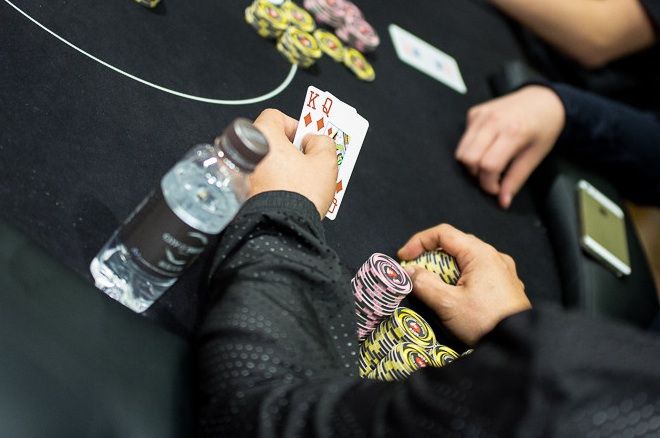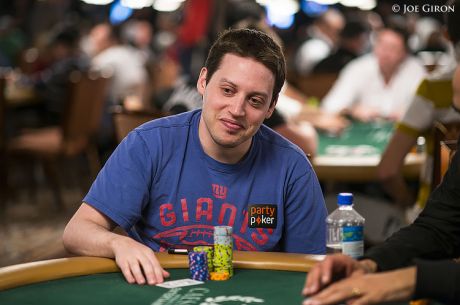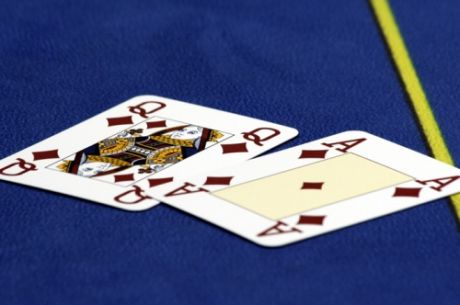The Real Value of Being Suited in No-Limit Hold��em

��But it was suited!��
Many no-limit hold��em players, especially those just starting out or of the ��recreational�� variety, will justify what might appear to be very loose starting hand requirements with the above statement. Being dealt two cards of the same suit can provide an extra temptation to play a hand, even if the cards are of low rank, not connected, and other factors like being out of position would recommend folding the hand.
But just how valuable is it to start out suited in no-limit hold��em? It��s a debate in which many players �� including accomplished pros �� still come down on either side, with some arguing for the importance of suitedness and others wanting to dismiss it entirely.
The Mathematical Value of Being Suited
There are 1,326 different starting hands in hold��em. You stand to get a pocket pair once every 17 hands, a non-suited unpaired hand 12 times every 17 hands, and a suited unpaired hand 4 times every 17 hands. That means your starting hand will be suited a little under one-fourth of the time (about 23.5%).*
It happens frequently in NLHE that the fact of being suited will encourage a player to stick around in a hand he or she might otherwise not play �� will tip the balance in those marginal spots where an opponent has raised and either folding or calling seem equally valid choices to make. Say the cutoff raises, the button calls, and it folds to the big blind who looks down at Q?8?. The player might well fold a hand like Q?8?, but being suited encourages the call.
Should it?
Qx8x-unsuited is a poor preflop hand under most circumstances, particularly when out of position. Pairing either the queen or eight isn��t going to be terribly promising with such poor kickers. You��ll flop two pair (queens and eights) about 1 in 48 times. You��ll flop trip queens or trip eights about 1 in 73 times. Even if you flop a straight �� which requires a flop of exactly Jx10x9x �� you don��t have the nuts.
In other words, there are very few encouraging flops for someone playing such a hand. But is Q?8? much better?
Strictly speaking, it isn��t. Range calculators will show Q?8? only performs around 2.5% better than Q?8? against a random hand, and here the likelihood is the player is up against opponents holding better-than-average hands.
An all-spade flop would be nice, of course, but that only happens about 1 in 118 times. A flop with two spades would be good, too, providing a flush draw. That happens a little less than 1 in 8 times (similar to the odds of flopping a set with a pocket pair). From there you are a little better than 1 in 3 to complete the flush by the river.
Put all together, that only adds up to making a flush with your suited hand about 1 out of 15 hands in which all five community cards are dealt. That��s even worse that drawing to fill a gutshot straight draw on the river.
Sounds pretty bad for being suited. But the truth is, the real value of being suited in no-limit hold��em goes beyond the strict likelihood (or unlikelihood) of completing flushes.
The Practical Value of Being Suited
Flopping a flush draw provides you leverage from that point forward, allowing you to bet or raise as a semi-bluff and either win a hand without going to showdown or go further in the hand with your holding perhaps being relatively disguised. Say you have Q?8?, a flop comes K?J?7?, and you either bet or raise your opponent. Your opponent will likely include hands with two spades when putting you on a range, but will also include kings, jacks, sevens, straight draws, and other combos, too.
Or say you��re playing K?Q? and a flop comes 9?7?4?. With an unsuited KxQx, you��re likely going to have difficulty going further in such a hand if your opponent bets. But with the diamonds you stick around and perhaps will even win a pot by hitting one of your overcards.
And when you do make your flush, the payoff is often a good one. Like flopping sets, making a flush on the turn or river can potentially win you an especially big pot, depending on how the action goes beforehand.
Unlike set mining, ��flush mining�� can be less clear cut and occasionally hazardous. When you fail to flop a set with your pocket fives, it��s relatively easy to toss your hand. But for many players it can be harder to get away from a flush draw, and staying in can lead to even more complicated decisions later in a hand during those instances (more often than not) when the flush fails to come.
When it comes to suitedness, the edge is significant but small enough to prevent you from being too enthused about playing hands like 10?2? or 8?3? �� that is, hands for which you are only hoping for a flush or flush draw that gives you leverage to pressure opponents or remain in hands you wouldn��t otherwise. It��s worth pointing out as well that when the flush comes for such hands and the action heats up, the possibility of losing to a bigger flush is quite real, too.
But with two Broadway cards or connectors �� hands that can improve to become best without making flushes �� there can be considerably more value to being suited than the mere 2.5% improvement over an unsuited equivalent might suggest.
Don��t let being suited encourage you to become overly loose, recklessly entering hands in spots when you wouldn��t otherwise. But recognize suitedness can add value, too, by giving you additional ways to win.
*Ed. note: The article originally misstated the percentage of starting hands in hold'em that are suited; it has been corrected.
Want to stay atop all the latest in the poker world? If so, make sure to get PokerNews updates on your social media outlets. Follow us on Twitter and find us on both Facebook and Google+!









